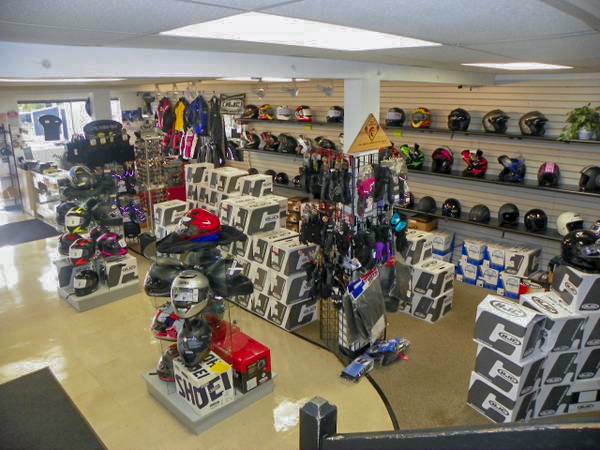Essential Motorcycle Parts NZ for Peak Performance and Safety
Essential Motorcycle Parts NZ for Peak Performance and Safety
Blog Article
A Comprehensive Check Out Motorcycle Components: What Every Motorcyclist Needs To Know
An extensive understanding of motorcycle parts is not just advantageous but important for any type of biker aiming to maximize performance and safety and security. Each component, from the engine's detailed workings to the integrity of brake systems, plays an essential function in the general experience and functionality of the bike. Nonetheless, beyond simply recognizing what these components do, it is vital to appreciate how they engage and sustain each other. This interconnectedness can make the difference between a smooth trip and unexpected issues. What details exist within this mechanical symphony that every motorcyclist should grasp?
Recognizing the Engine
The engine, typically pertained to as the heart of a motorbike, is a complicated assembly of parts that operate in harmony to transform fuel into motion. At its core, the engine's key function includes the combustion procedure, where air and gas mix and fire up within the cyndrical tubes, causing controlled explosions that drive the pistons. These pistons go up and down, converting chemical energy right into power, which ultimately turns the crankshaft, inevitably powering the bike.

Recognizing the complexities of a motorcycle engine is crucial for cyclists and lovers alike. It not just gives insight into how motorcycles accomplish their outstanding power and speed but also aids in efficient upkeep and troubleshooting, guaranteeing longevity and reliability when traveling.
Suspension Solutions
While the engine powers the motorcycle, the suspension system plays a crucial role in guaranteeing a regulated and smooth trip. The suspension system is accountable for soaking up shocks from the road surface area, maintaining tire call, and giving security during cornering and braking. It comprises two major components: the front forks and the rear shock absorbers.
Front forks are generally telescopic, moistening and consisting of a spring system. The springtime compresses and extends to soak up bumps, while the wetting device regulates the movement to avoid too much jumping. This combination makes sure the front wheel continues to be in contact with the road, providing remarkable handling and convenience.
The back suspension, usually a monoshock or twin-shock configuration, functions likewise to the front suspension but is customized to sustain the bike's weight and motorcyclist - motorcycle shop. It handles rear wheel activity, adding to the bike's general balance and responsiveness
Suspension systems can be adjustable, permitting riders to tweak preload, compression, and rebound setups according to individual preferences and riding conditions. This adjustability enhances efficiency by enhancing the motorcycle's communication with diverse terrains. In summary, an efficient shock absorber is important for motorcyclist comfort, safety, and the motorbike's dealing with prowess.
Brake Components
Quiting power is a fundamental element of bike safety and security, and it rests on the efficiency of the brake parts. The primary elements of a motorbike's braking system consist of the brake pads, calipers, rotors, and master cyndrical tube. moto parts nz. Each of these components plays an important function in ensuring efficient stopping performance
Brake pads are vital as they produce the necessary friction against the blades to reduce article source down or quit the bike. Constructed from materials such as sintered metal or organic composites, the option of brake pad product significantly impacts performance and longevity. Calipers, real estate the brake pads, use pressure to the pads when the brake bar is engaged, assisting in call with the rotors.
The rotors, commonly made from stainless-steel or cast iron, are mounted to the wheels and serve as the surface versus which the brake pads press. Their layout, consisting of size and thickness, impacts warm dissipation and quiting power. The master cyndrical tube, connected to the brake bar, creates hydraulic stress transmitted via brake lines to the calipers, making certain regular stopping force.
Normal upkeep and inspection of these parts are important for ideal efficiency, avoiding wear and guaranteeing motorcyclist security when driving.
Tire Basics
Beyond maintaining durable braking systems, making sure ideal tire efficiency is similarly significant for bike safety and efficiency. Tires are the sole contact factor between the motorbike and the road, making their problem critical in dealing with, stability, and total experience high quality.

Check the sidewall for the DOT (Division of Transportation) code to determine the tire's age. Spending focus in these tire basics not only maximizes performance however also substantially boosts riding security.
Electrical Systems
In the world of bike upkeep, the electrical most expensive helmet system plays a crucial role in guaranteeing reliable efficiency and cyclist safety and security. This complex network incorporates necessary elements such as the battery, alternator, starter motor, and circuitry harness. Each component is important for the smooth operation of the bike, from ignition to illumination and interaction with different sensing units.
The battery functions as the heart of the electric system, supplying the necessary power to start the engine and run devices. Regularly examining the battery's voltage and terminals for rust is vital to avoid unforeseen failings. The generator, on the various other hand, charges the battery while the engine is running, making certain a constant power supply.
To maintain it, bikers should pay interest to any kind of uncommon sounds or difficulties during start-up. Ensuring that the cords are complimentary and intact from damage is important for guaranteeing and stopping short circuits capability.
Final Thought

Stopping power is an essential facet of bike safety and security, and it hinges on the performance of the brake elements. The key aspects of a motorbike's stopping system consist of the brake pads, calipers, blades, and master cylinder.Brake pads are important as they develop the required friction against the rotors to reduce down or quit the motorcycle.Beyond maintaining robust stopping systems, making certain optimum tire efficiency is equally considerable for motorbike safety and security and performance.In the realm of motorbike upkeep, website link the electrical system plays a vital duty in making certain reputable efficiency and biker security.
Report this page